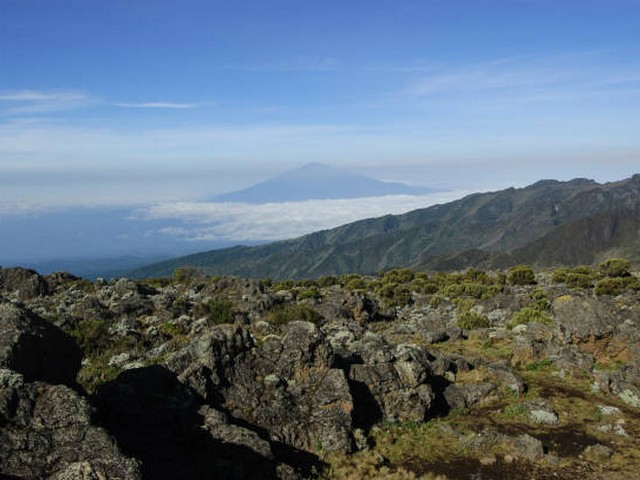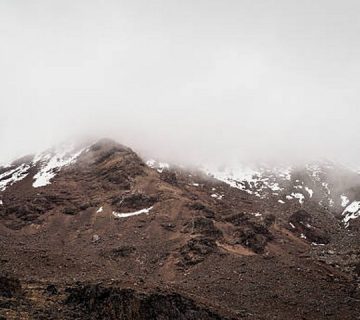Health And Safety Tips For Summit Night on Kilimanjaro
Standing majestically above the African plains, Mount Kilimanjaro beckons adventurers from around the globe with its snow-capped summit and breathtaking views. As the highest peak in Africa, reaching the summit, Uhuru Peak, is a dream for many. However, the journey, especially the summit night, is not without its challenges. At Kilimanjaro Centre for Trekking and Ecotourism (KCTE), we understand the allure of this majestic mountain and the diligence required to conquer it safely. In this blog post, we’ll share essential health and safety tips for summit night on Kilimanjaro, ensuring that your adventure is as exhilarating as it is safe.
Preparing for Summit Night: The Foundation of Success
Physical Preparation
Conquering Kilimanjaro starts long before you set foot on the mountain. Physical fitness is paramount, as summit night involves approximately 12-14 hours of hiking. Focus on cardiovascular fitness, leg strength, and endurance training. Incorporate hiking, stair climbing, and altitude training if possible.
Mental Preparation
The challenge of summit night is not solely physical. Mental toughness plays a critical role in overcoming the cold, fatigue, and altitude. Prepare mentally by setting realistic expectations, focusing on positive outcomes, and practicing stress management techniques like deep breathing or meditation.
Acclimatization
To enhance your chances of a successful summit, proper acclimatization is crucial. Spend at least five to seven days on the mountain before attempting the summit. This gradual ascent will help your body adjust to the high altitude, reducing the risk of acute mountain sickness (AMS).
Navigating the Summit Night: Strategies and Tips
Start with the Right Gear
The temperature on summit night can plummet to below freezing. Dress in layers to manage body temperature and protect against frostbite. Essential gear includes:
- Thermal base layers
- Insulated jacket and pants
- Waterproof outer layers
- Warm gloves and hat
- High-quality hiking boots with thermal socks
- Headlamp for visibility
Nutrition and Hydration
Your body needs fuel for the arduous trek. Eat a high-calorie meal before starting, and carry snacks like nuts, chocolate, and energy bars. Hydration is equally important, despite the cold. Drink water regularly to prevent dehydration, which can exacerbate symptoms of altitude sickness.
Pace Yourself
Summit night requires a slow and steady pace. Rushing increases your risk of fatigue and altitude sickness. Follow the guidance of your KCTE experienced guides, who will set an appropriate pace and make necessary adjustments based on the group’s condition.
Breathing Techniques
At high altitudes, every breath counts. Practice deep, rhythmic breathing to maximize oxygen intake. This technique also helps maintain a steady pace and calms the mind during challenging sections of the climb.
Recognizing and Responding to Altitude Sickness
Know the Symptoms
Altitude sickness can be a serious concern on summit night. Recognize the symptoms early, which can include headache, nausea, dizziness, and fatigue. Inform your guide immediately if you or a fellow trekker experiences these symptoms.
Prevention and Treatment
Preventive measures include proper acclimatization, hydration, and medication (like Acetazolamide, if prescribed by your doctor). If symptoms arise, the best treatment is to descend to a lower altitude. Your KCTE guides are trained to handle such situations professionally and with utmost care.
Celebrating the Summit: Safety Beyond the Peak
Reaching the summit is an emotional high, but remember, the descent is equally critical. Maintain focus, as fatigue and the euphoria of success can lead to accidents. Continue to hydrate, eat, and follow the guidance of your guides, who will lead you safely back to base camp.
Why Choose KCTE for Your Kilimanjaro Adventure?
At Kilimanjaro Centre for Trekking and Ecotourism, we are not just guides; we are custodians of your dreams and safety. Our expertly trained guides, comprehensive acclimatization processes, and focus on personalized care ensure that your journey to the roof of Africa is memorable and secure. Choose KCTE, where your adventure dreams become a cherished reality.
FAQs on Summit Night Health and Safety
Q: What is the best time of year to climb Kilimanjaro for optimal conditions?
A: The best times are during the dry seasons, from June to October and from December to March.
Q: How cold does it get on summit night?
A: Temperatures can drop to -20°C (-4°F) or lower, so adequate thermal gear is essential.
Q: Can I climb Kilimanjaro without prior mountain climbing experience?
A: Yes, many climbers without previous mountain climbing experience successfully summit Kilimanjaro. However, physical preparation and choosing a reputable tour operator like KCTE are key.
Q: How do I prevent frostbite during summit night?
A: Protect extremities with proper gear, including insulated gloves and boots, and keep moving to maintain blood circulation.
Q: What should I do if I can’t continue to the summit?
A: Safety is paramount. If you can’t continue, inform your guide immediately. They will assist you to descend to a safer altitude and ensure you receive the necessary care.
Conclusion: Your Summit Awaits
Summit night on Kilimanjaro is a transformative experience that tests the limits of your endurance and spirit. By following these health and safety tips and choosing Kilimanjaro Centre for Trekking and Ecotourism for your journey, you’ll be well-prepared to safely enjoy the breathtaking beauty of Africa’s highest peak. Ready to stand on the roof of Africa? Contact us today to book your Kilimanjaro adventure with KCTE, where we turn your high-altitude dreams into reality.




